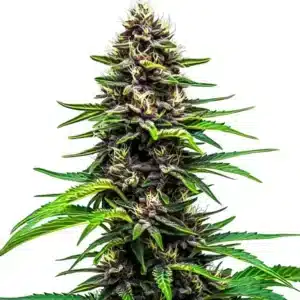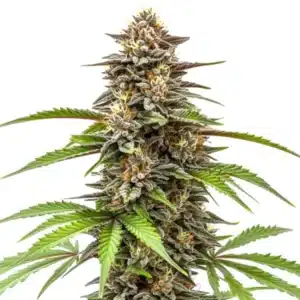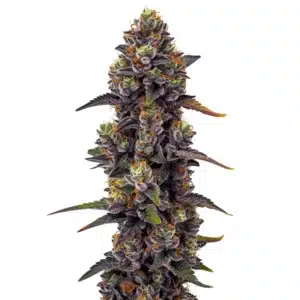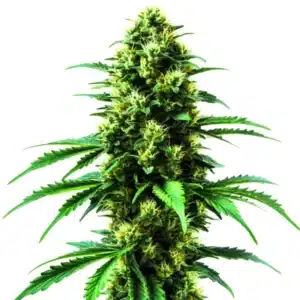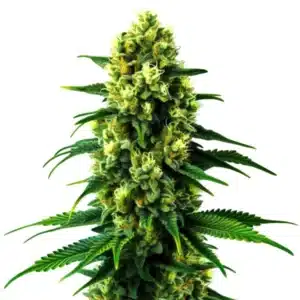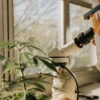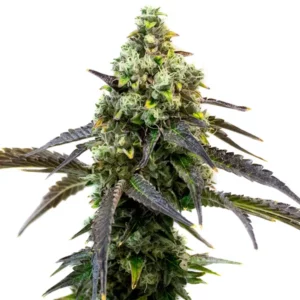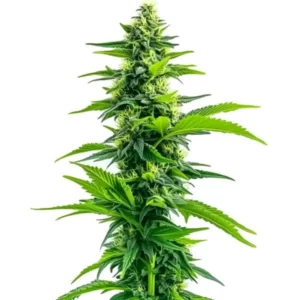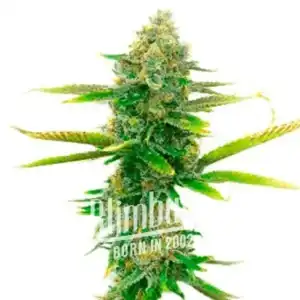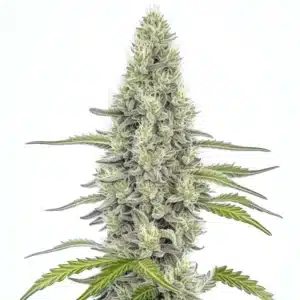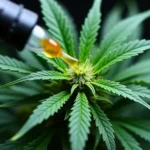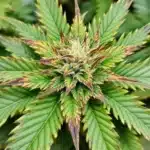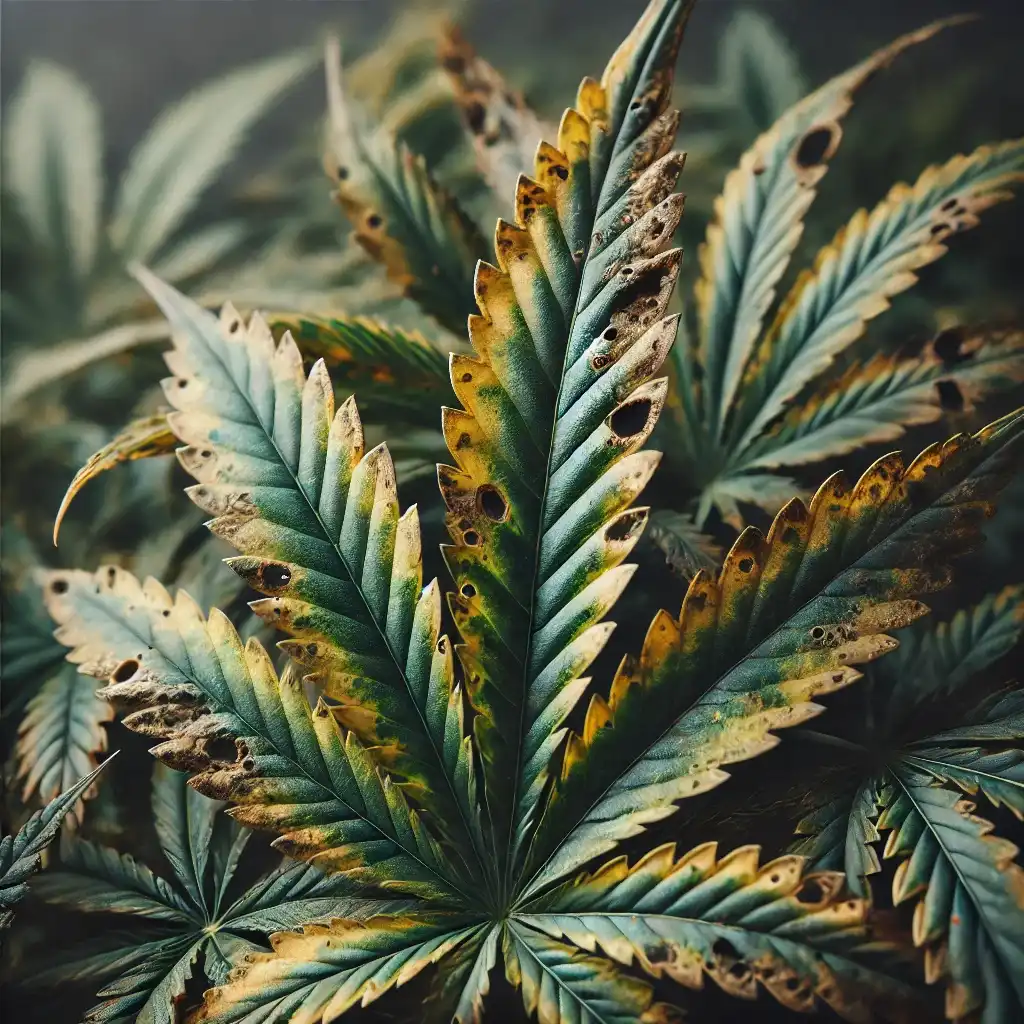
Tackling Cannabis Leaf Problems
Tackling Cannabis Leaf Problems: A Grower’s Guide to Healthy Plants
When growing cannabis, the condition of its leaves is one of the most telling signs of a plant’s health. Cannabis leaf problems can indicate various issues, from nutrient deficiencies to environmental stressors. Addressing these problems quickly is crucial for maintaining healthy, productive plants. This article explores common cannabis leaf problems, how to identify them, and what you can do to ensure your plants thrive.
Promos & Deals
Identifying Common Cannabis Leaf Problems
Cannabis leaves are often the first place you’ll notice signs of trouble. Early detection can prevent more serious problems down the line, so it’s essential to know what to look for.
Recommended Strains
Gold Leaf
|
|
THC | 17% - 21% (Medium) |
|
|
Type | Feminized |
|
|
Yield | High |
|
|
Phenotype | 60% Indica / 40% Sativa |
Gold Leaf Auto
|
|
THC | 20% - 24% (Medium) |
|
|
Type | Autoflowering |
|
|
Yield | High |
|
|
Phenotype | 55% Indica / 45% Sativa |
Recognizing Early Signs of Leaf Issues
The first step in managing cannabis leaf problems is recognizing them early. Healthy cannabis leaves are vibrant green and free from discoloration, spots, or deformities, but growers must understand common cannabis leaf discoloration causes to take timely action.
Early signs can sometimes be subtle, like a slight paling of the green color or minor curling at the edges. However, these changes can escalate if not addressed. For example, pale leaves can rapidly turn yellow or brown, indicating a more serious issue. Regular inspections help catch these early signs and allow for quick corrective action, especially in autoflower leaf problems where changes can escalate quickly.
Watch for yellowing, browning, curling, or spots on the leaves. These symptoms can indicate underlying issues. For instance, yellowing leaves might suggest a nitrogen deficiency, while brown spots could signal a potassium shortage. Catching these signs early allows for timely intervention.
Differentiating Between Nutrient Deficiencies and Other Problems
While nutrient deficiencies are a common cause of cannabis leaf problems, they aren’t the only potential culprits. Environmental factors like overwatering, temperature stress, or light burn can also cause similar symptoms. Differentiating between these causes is crucial for effective treatment when addressing persistent cannabis plant leaf problems.
Nutrient deficiencies tend to show specific patterns on the leaves, such as yellowing between the veins or brown spots on older leaves first. Environmental issues might present more broadly. For instance, overwatering can cause generalized wilting, while light burn often affects the leaves closest to the light source, causing them to bleach and crisp at the edges.
To diagnose the issue, consider the growing conditions and any recent changes you’ve made to your setup. If you’ve recently adjusted the lighting or watering schedule, the symptoms you’re observing might relate to these changes. Keeping a detailed log of your growing practices can help you identify patterns and link them to specific leaf problems.

Nutrient Deficiencies That Affect Cannabis Leaves
Nutrient deficiencies are one of the most common causes of cannabis leaf problems. Each nutrient plays a specific role in the plant’s health, and a shortage can lead to noticeable symptoms in the leaves.
Nitrogen Deficiency: Yellowing and Wilting Leaves
Nitrogen is essential for healthy leaf growth and chlorophyll production. When cannabis plants are deficient in nitrogen, the leaves often turn yellow, starting with the lower leaves. The yellowing is usually accompanied by wilting, as the plant struggles to produce the energy it needs.
Nitrogen deficiency often occurs during the flowering stage when the plant’s demand for nitrogen decreases. However, a significant shortage during the vegetative stage can stunt growth and reduce overall yield. To correct a nitrogen deficiency, consider adding a nitrogen-rich fertilizer. Ensure your plants are receiving the right amount of water and are not over-fertilized, as both can worsen the problem.
In severe cases, nitrogen deficiency can cause the leaves to become so weak that they drop off entirely. This reduces the plant’s ability to photosynthesize and exposes the buds to more direct light, which can lead to additional stress.
Phosphorus Deficiency: Darkened and Curling Leaves
Phosphorus is critical for energy transfer within the plant. A deficiency can lead to darkened, purplish leaves that curl at the edges. This problem is more common in cooler temperatures, as phosphorus is less available to the plant when it’s cold.
Phosphorus deficiency can also slow down bud development during flowering, leading to smaller, less dense flowers. To address a phosphorus deficiency, adjust the pH level of your soil or growing medium to ensure it’s within the optimal range for phosphorus uptake, typically between 6.0 and 7.0. You can also apply a phosphorus-rich fertilizer to help restore balance.
If left untreated, phosphorus deficiency can cause the stems and petioles (the stalks that attach leaves to the stem) to turn reddish-purple. This indicates that the plant is redirecting resources to support bud growth.
Potassium Deficiency: Brown Spots and Edge Burn
Potassium is vital for overall plant health, particularly in regulating water and nutrient uptake. A deficiency in potassium can cause brown spots on the leaves, along with burning or scorching along the edges. The leaves may also curl up at the tips, signaling the plant’s distress.
Potassium plays a crucial role in developing strong stems and resistance to disease. Therefore, a potassium deficiency can leave your plants more vulnerable to environmental stressors and pathogens. To treat a potassium deficiency, check the pH levels to ensure they are in the correct range for potassium absorption. You can then supplement with a potassium-rich fertilizer, ensuring that the plant receives adequate nutrients to recover.
In some cases, potassium deficiency can lead to the “clawing” of leaves, where the tips curl downwards and become brittle. This symptom is often mistaken for other issues, so it’s important to closely monitor the plant’s response to any treatment.
Calcium Deficiency: Crinkled and Deformed Leaves
Calcium plays a key role in cell wall development and overall plant structure. A calcium deficiency often results in crinkled, distorted leaves, with new growth particularly affected. The plant may also exhibit weak stems and poor root development.
Calcium deficiency is often accompanied by other nutrient deficiencies, such as magnesium, as these two nutrients are closely related in their uptake and function within the plant. To correct a calcium deficiency, consider using a calcium-magnesium supplement, which is readily available in most garden centers. Additionally, ensure that your soil or growing medium has the proper pH for calcium absorption, typically between 6.2 and 7.0.
If calcium deficiency persists, it can lead to the collapse of the plant’s structure, making it difficult for the plant to support its weight, especially during the flowering stage when the buds become heavy.
Magnesium Deficiency: Interveinal Yellowing
Magnesium is crucial for chlorophyll production and overall energy transfer within the plant. A magnesium deficiency typically shows up as interveinal yellowing, where the areas between the veins turn yellow while the veins remain green.
Magnesium deficiency is often exacerbated by low pH levels, which can lock out magnesium from the plant’s root system. To address this issue, you can add a magnesium supplement, such as Epsom salts, to your watering routine. It’s also important to check the pH levels to ensure that they are conducive to magnesium uptake, ideally between 6.0 and 7.0.
In advanced stages, magnesium deficiency can cause the leaves to curl upwards and take on a brittle texture, making them more susceptible to breakage and damage from pests.
Environmental Stressors Causing Cannabis Leaf Problems
Environmental factors can significantly impact the health of your cannabis leaves. Stressors like improper watering, temperature fluctuations, and light exposure can lead to a variety of leaf problems.
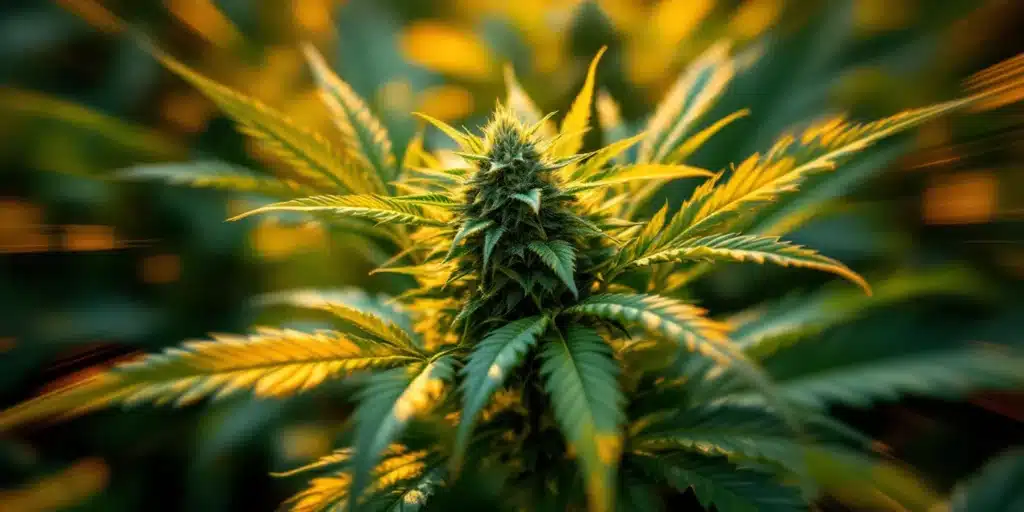
Overwatering: Drooping and Waterlogged Leaves
Overwatering is one of the most common environmental stressors that can cause cannabis leaf problems. When plants receive too much water, their roots can become oxygen-starved, leading to drooping, waterlogged leaves. Over time, this can cause the leaves to yellow and die off.
Overwatering not only affects the leaves but also creates an environment conducive to root rot, a condition where the roots decay due to a lack of oxygen. This can severely stunt the plant’s growth and, if left unchecked, lead to the plant’s death. To prevent overwatering, ensure that your plants are in well-draining soil and that you allow the top inch of soil to dry out between waterings. If you notice signs of overwatering, reduce your watering frequency and consider aerating the soil to improve drainage.
Using pots with drainage holes and ensuring that your growing medium is not too compact can also help prevent overwatering by allowing excess water to escape more easily.
Underwatering: Dry and Brittle Leaves
On the flip side, underwatering can cause cannabis leaves to become dry and brittle. When plants don’t receive enough water, they cannot perform essential functions like nutrient uptake and photosynthesis. This leads to dry, crispy leaves that may curl and turn brown.
Underwatering often occurs in hot climates or during periods of rapid growth when the plant’s water needs increase. To correct underwatering, water your plants thoroughly, ensuring that the water reaches the root zone. Moving forward, establish a consistent watering schedule that keeps the soil moist but not saturated.
If underwatering persists, it can cause the leaves to drop prematurely, reducing the plant’s ability to photosynthesize and ultimately leading to lower yields.
Temperature Stress: Curling and Discoloration
Temperature extremes, whether too hot or too cold, can stress cannabis plants and lead to leaf problems. High temperatures can cause leaves to curl upwards and develop burnt edges, while cold temperatures can slow down growth and cause leaves to darken or develop purple hues.
Temperature stress is particularly problematic during the flowering stage, as it can interfere with bud development and reduce potency. To protect your plants from temperature stress, maintain a consistent temperature range of 70-85°F (20-29°C) during the day and slightly cooler at night. If you’re growing indoors, consider using fans, heaters, or air conditioning to regulate the environment.
For outdoor growers, using shade cloths during heatwaves or frost blankets during cold snaps can help mitigate the effects of extreme temperatures.
Light Burn: Bleached and Crispy Leaves
Light burn occurs when cannabis plants are exposed to too much direct light, especially from high-intensity grow lights. The affected leaves may become bleached, turning white or yellow, and can eventually become crispy and dry.
Light burn is most common in indoor grows where the lights are positioned too close to the canopy. To prevent light burn, ensure that your grow lights are positioned at the correct distance from the plants, according to the manufacturer’s recommendations. If you notice signs of light burn, raise the lights or reduce their intensity to give the plants a break from the harsh light.
In some cases, rotating the plants or adjusting the light cycle can help reduce the risk of light burn, particularly during the flowering stage when the plants are most sensitive to light intensity.
Wind Burn: Torn and Shredded Leaves
Wind burn is a lesser-known but equally damaging environmental stressor that occurs when plants are exposed to excessive wind or airflow. The leaves may become torn, shredded, or develop a scorched appearance, particularly around the edges.
Wind burn is often a result of placing fans too close to the plants or using fans on too high a setting. To prevent wind burn, position fans in a way that promotes gentle air circulation without directly blowing on the plants. If your plants are outdoors, consider using windbreaks to protect them from strong gusts.
In severe cases, wind burn can cause the leaves to dry out and die, reducing the plant’s ability to photosynthesize and ultimately affecting growth and yield.
Pest and Disease Issues Visible on Cannabis Leaves
Pests and diseases are common challenges for cannabis growers, and the leaves are often the first place you’ll notice signs of an infestation or infection.
Spider Mites: Tiny Spots and Webbing on Leaves
Spider mites are tiny, sap-sucking pests that can cause significant damage to cannabis leaves. Their presence is often indicated by small, yellow or white spots on the leaves, along with fine webbing between the leaves and stems.
Spider mites thrive in hot, dry conditions, so increasing the humidity and lowering the temperature in your grow room can help discourage them. To combat spider mites, consider using insecticidal soap, neem oil, or introducing natural predators like ladybugs. It’s also important to regularly inspect your plants and maintain a clean growing environment to prevent infestations.
If left untreated, spider mites can quickly multiply and cause widespread damage to the plant, leading to reduced yields and potentially killing the plant if the infestation becomes severe.
Aphids: Sticky Residue and Deformed Growth
Aphids are small, soft-bodied insects that feed on the sap of cannabis plants. They often leave behind a sticky residue known as honeydew, which can attract mold and lead to further problems. Infected leaves may also become deformed or curled.
Aphids reproduce rapidly, so early detection is key to preventing a full-blown infestation. To control aphids, use a strong jet of water to knock them off the plants, followed by applying insecticidal soap or neem oil. Introducing beneficial insects like lacewings can also help keep aphid populations in check.
In severe infestations, the honeydew produced by aphids can lead to the growth of sooty mold, a black fungus that can further damage the leaves and reduce the plant’s ability to photosynthesize.
Powdery Mildew: White, Powdery Spots on Leaves
Powdery mildew is a fungal disease that appears as white, powdery spots on the leaves, stems, and buds of cannabis plants. If left untreated, it can spread rapidly and reduce the plant’s ability to photosynthesize.
Powdery mildew thrives in humid conditions with poor air circulation. To prevent powdery mildew, ensure good air circulation in your growing area and avoid overcrowding your plants. If you notice signs of powdery mildew, remove the affected leaves and treat the plant with a fungicide designed for use on cannabis.
Using sulfur burners or UV light treatments can also help control powdery mildew, particularly in larger grows where the disease can spread quickly if not addressed.
Leaf Septoria: Yellow Spots Leading to Leaf Drop
Leaf septoria, also known as yellow leaf spot, is a fungal disease that causes yellow or brown spots on the leaves, eventually leading to leaf drop. It typically affects the lower leaves first and can quickly spread if not addressed.
Leaf septoria is more common in outdoor grows, especially in regions with high humidity and frequent rainfall. To manage leaf septoria, remove infected leaves and improve air circulation around your plants. Fungicides may be necessary in severe cases, and it’s also important to avoid overhead watering, which can spread the fungal spores.
In addition to affecting the leaves, leaf septoria can weaken the plant overall, reducing its ability to produce healthy buds and leading to lower yields.
Rust Fungus: Rust-Colored Spots and Blotches
Rust fungus is another fungal disease that affects cannabis leaves, causing rust-colored spots or blotches. The affected leaves may also curl and die off, reducing the plant’s overall vigor.
Rust fungus can be particularly challenging to manage because it often requires multiple treatments to fully eradicate. To prevent rust fungus, maintain good air circulation and avoid wetting the leaves during watering. If you notice rust spots, remove the affected leaves and consider using a fungicide to prevent further spread.
In severe cases, rust fungus can spread to the stems and buds, leading to more extensive damage and potentially affecting the quality and potency of the final product.
Preventing and Treating Cannabis Leaf Problems
Preventing cannabis leaf problems is always better than treating them after they occur. By implementing best practices in nutrient management, environmental control, and pest management, you can keep your plants healthy and thriving.
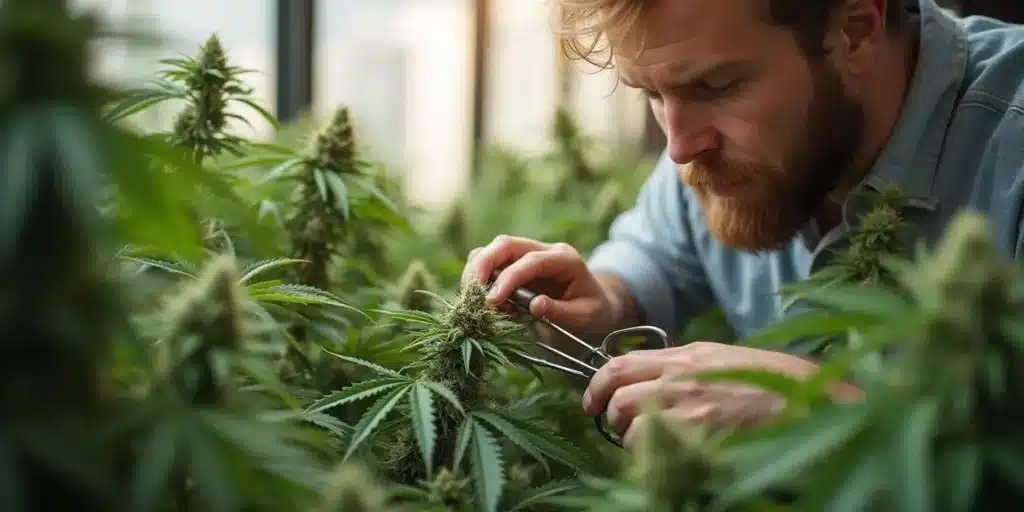
Best Practices for Nutrient Management
Proper nutrient management is key to preventing deficiencies that lead to cannabis leaf problems. Start by choosing high-quality fertilizers that provide a balanced mix of essential nutrients, and follow the recommended feeding schedule for your plants’ growth stage.
It’s also important to monitor the pH levels of your soil or growing medium, as pH affects nutrient availability. Aim to keep the pH within the optimal range for cannabis, typically between 6.0 and 7.0 for soil and 5.5 and 6.5 for hydroponics.
Over-fertilization can also cause problems, leading to nutrient burn and the buildup of salts in the soil. To prevent this, follow the “less is more” approach, starting with lower doses of nutrients and gradually increasing them as needed. Regularly flushing the soil with water can also help remove excess nutrients and prevent buildup.
Environmental Control for Healthy Leaves
Maintaining a stable environment is crucial for preventing stress-related leaf problems. Monitor the temperature, humidity, and light levels in your growing area, and make adjustments as needed to keep your plants comfortable.
Good air circulation is also important, as it helps prevent fungal diseases and ensures that your plants can breathe. Use fans to promote gentle airflow, but be careful not to direct the wind too forcefully at your plants.
Environmental control also extends to the cleanliness of your growing space. Regularly cleaning and disinfecting the area, as well as using clean tools and equipment, can help prevent the introduction of pests and diseases that could compromise the health of your plants.
Integrated Pest Management (IPM) Strategies
Integrated Pest Management (IPM) is a holistic approach to controlling pests that combines prevention, monitoring, and targeted treatments. By regularly inspecting your plants for signs of pests, you can catch infestations early and take action before they become a serious problem.
IPM strategies include using beneficial insects, applying organic pest control products, and maintaining a clean growing environment. By integrating these practices into your routine, you can keep pests at bay and protect your cannabis leaves from damage.
IPM also emphasizes the use of biological controls, such as introducing natural predators or using microbial inoculants that can outcompete harmful pathogens. By creating a balanced ecosystem within your grow space, you can reduce the need for chemical interventions and promote long-term plant health.
How to Revive Damaged Leaves
If your cannabis leaves have already been damaged by nutrient deficiencies, environmental stress, or pests, there are steps you can take to help them recover. Start by addressing the underlying cause of the problem, whether it’s adjusting your watering schedule, changing the nutrient mix, or treating for pests.
Next, consider removing the most severely damaged leaves to prevent them from draining energy from the plant. While some damage is irreversible, healthy new growth will often replace the affected leaves as the plant recovers.
In some cases, foliar feeding applying a nutrient solution directly to the leaves can help the plant recover more quickly by delivering nutrients directly where they are needed most. However, be cautious with this technique, as it can also increase the risk of leaf burn if not done properly.
How pH Levels Impact Leaf Health
Maintaining the correct pH is essential for healthy cannabis leaves, as pH directly affects nutrient uptake. If the pH is too high or too low, your plants may not be able to absorb the nutrients they need, leading to deficiencies and leaf problems.
To keep pH levels in check, regularly test your soil or nutrient solution using a pH meter. If you need to adjust the pH, use pH up or pH down products specifically designed for plants. By keeping the pH within the optimal range, you can prevent many of the leaf problems that arise from nutrient imbalances.
Regularly calibrating your pH meter is also important to ensure accurate readings. pH fluctuations can occur over time, so consistent monitoring and adjustment are key to maintaining the health of your cannabis plants.
Advanced Leaf Problem Diagnosis Techniques
For more complex or persistent leaf problems, advanced diagnostic techniques can help you get to the root of the issue and find a solution.
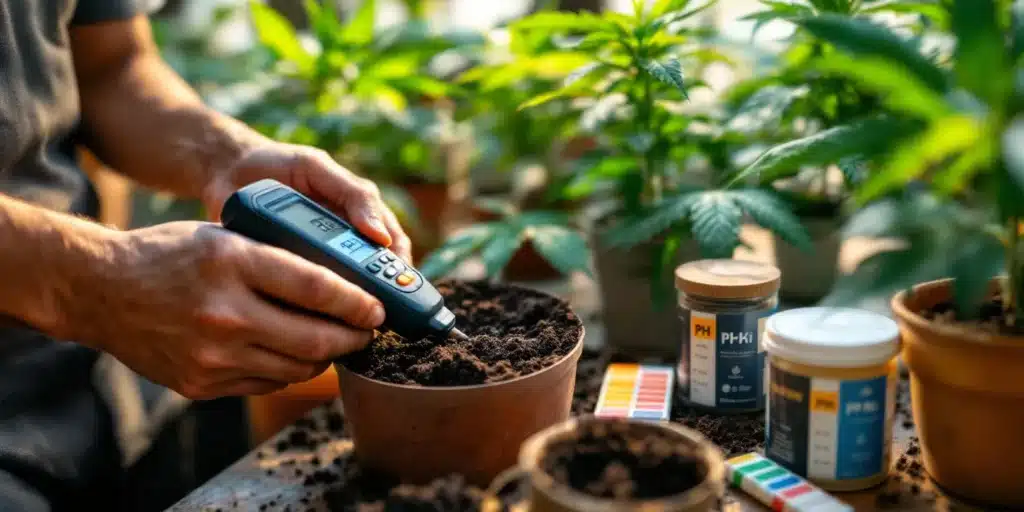
Using pH Meters and TDS Meters for Accurate Readings
pH meters and Total Dissolved Solids (TDS) meters are invaluable tools for diagnosing cannabis leaf problems. A pH meter allows you to accurately measure the acidity or alkalinity of your soil or nutrient solution, helping you determine if pH imbalances are causing nutrient lockout.
TDS meters, on the other hand, measure the concentration of dissolved nutrients in your water or soil. If your TDS readings are too high, it could indicate that your plants are receiving too many nutrients, leading to nutrient burn. Conversely, low TDS readings might suggest a nutrient deficiency.
Using these tools in combination provides a more comprehensive picture of your plants’ health, allowing you to make more informed decisions about nutrient management and environmental control.
Tissue Testing: Getting to the Root of Leaf Issues
Tissue testing involves analyzing a sample of your plant’s leaves to determine the nutrient content and identify any deficiencies or toxicities. This advanced diagnostic technique can provide precise information about your plant’s health, allowing you to make targeted adjustments to your feeding regimen.
While tissue testing typically requires sending samples to a lab, some advanced growers may invest in portable testing kits for on-site analysis. This method is particularly useful for large-scale operations where nutrient imbalances can significantly impact yields.
Tissue testing can also help identify less common nutrient deficiencies or toxicities that might not be immediately apparent through visual inspection alone. The exact nutrient profile of your plants, you can fine-tune your feeding strategy to optimize growth and prevent future issues.
When to Seek Professional Advice
In some cases, cannabis leaf problems can be challenging to diagnose and treat on your own. If you’ve tried multiple solutions and the issue persists, it may be time to seek professional advice. Consulting with a horticulturist, agronomist, or experienced cannabis grower can provide valuable insights and help you identify and resolve the problem.
Professional consultations are especially beneficial for large-scale grows, where even minor leaf problems can have a significant impact on overall yield and quality. By leveraging the expertise of professionals, you can ensure that your plants receive the care they need to thrive.
In addition to in-person consultations, many experts offer online services, including remote diagnostics and tailored advice based on photos or videos of your plants. Taking advantage of these resources can save time and help you address issues more effectively, even if you don’t have direct access to local experts.
FAQs
What are the most common cannabis leaf discoloration causes?
The most common causes of cannabis leaf discoloration include nutrient deficiencies (such as nitrogen, potassium, or magnesium), environmental stress (like light burn, temperature extremes, or overwatering), and pest infestations. Identifying the exact cause requires examining the plant’s overall condition, recent changes in the growing environment, and the specific pattern of discoloration on the leaves.
How do I deal with autoflower leaf problems during growth?
Autoflower strains can develop leaf problems due to rapid growth and sensitivity to stress. To address autoflower leaf problems, monitor pH levels closely, provide a balanced nutrient schedule, and avoid overwatering or excessive light. Since autoflowers have a fixed life cycle, quick action is essential to prevent long-term damage and ensure healthy development.
How can I identify cannabis plant leaf problems early?
Early signs of cannabis plant leaf problems include yellowing, curling, spotting, or unusual texture. These symptoms often start subtly and can escalate quickly if left untreated. Regularly inspecting your plants, keeping a grow log, and maintaining stable environmental conditions will help you detect and fix issues before they affect overall plant health and yield.


